Popular games for platform PC-9800 Series
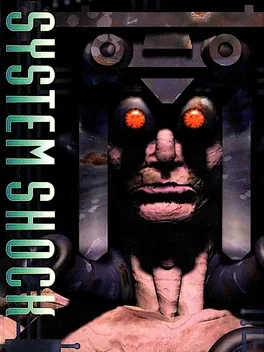
A seminal cyberpunk first-person exploratory adventure game with RPG elements in which, waking up in the Citadel Space Station, a lone hacker has to survive corrupted enemies and collect audio logs and equipment from former station workers in order to shut down SHODAN, the station's artificial intelligence that has killed everyone on board and now intends to destroy the world.
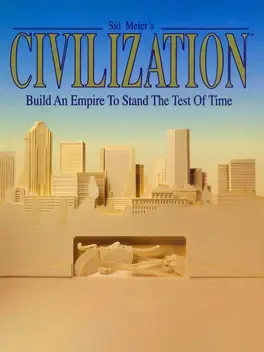
Sid Meier's Civilization is a turn-based strategy computer game created by Sid Meier for MicroProse in 1991.The game's objective is "...to build an empire that would stand the test of time". The game begins in 4000 BC, and the players attempt to expand and develop their empires through the ages until modern and near-future times. It is also known simply as Civilization.

The year is 275 B.C. Through conquest and careful diplomacy, the Roman republic has brought the petty kingdoms and city-states of Italia under its control. This is the moment at which the heirs of Romulus and Remus step onto the world stage. This is the humble beginning of an empire that will one day cover most of Europe, Asia Minor, and North Africa. As an ambitious young officer, you duty is to defend Rome. Your hope is to become Caesar. Your fate - to rule the world.
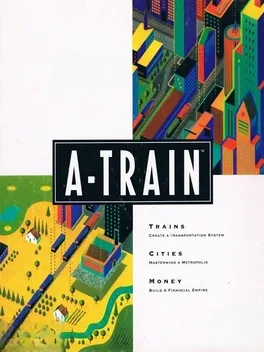
You play the part of the head of a railroad company, with the aim of creating your own railroad empire, providing a successful mass transit system that will be an inspiration to the rest of the world. Another goal is to provide the impetus for your chosen city to develop. There are a number of different places to set up business each with different layouts and existing houses and businesses. The main money earners are passenger trains, that can be scheduled to pick up passengers at the times of day when the demand is high. However, in the long term you need the city to develop. This requires setting up trains that transport resources to where they are needed. These resources are used to build houses, and other buildings, increasing the number of passengers for your commuter trains. As the city develops, new businesses will spring up, such as stadiums, high rise office blocks, and ski resorts. You can also build your own businesses, the success of which will depend on the local population, the presence of competing businesses, and even the changes of the seasons, among other factors.
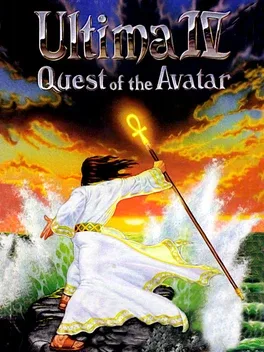
Following the defeat of the evil triad in the previous three Ultima games, the world of Sosaria changed beyond recognition: continents rose and sank, and new cities were built, heralding the advent of a different civilization. Unified by the reign of the benevolent monarch Lord British, the new world was renamed Britannia. Lord British wished to base people's well-being on the ethical principles of Truth, Love, and Courage, proclaiming the Eight Virtues (Honesty, Compassion, Valor, Justice, Sacrifice, Honor, Spirituality, and Humility) as the ideal everyone should strive for. The person who could accomplish full understanding and realization of these virtues would serve as a spiritual leader and a moral example for the inhabitants of Britannia; he alone would be able to obtain holy artifacts, descend into the Stygian Abyss, and access the Codex of Ultimate Wisdom. This person is the Avatar. The fourth game in the Ultima series features an improved game engine, with color graphics and enhanced character interaction: the player can have conversations with non-playable characters by typing names of various topics. However, the main difference between Ultima IV and its predecessors in the series (as well as other role-playing games) lies in the game's objectives and the ways to fulfill them. Instead of building up a character by any means possible in order to face a villain in the end of the game, in Ultima IV the player is trying to become the Avatar, a role model for people. This means upholding the Eight Virtues, basically trying to become a better person. Making morally conscious decisions and helping other people is not done expecting a material reward, but because it is the actual goal of the game and the main focus of its gameplay. The game frowns on behavior typical of most other RPGs, such as backstabbing fleeing enemies or picking up everything that isn't nailed down even if it does not belong to the protagonist. This different approach established the game's reputation as the first "true" Ultima, influencing the design philosophy of later installments and the overall spirit of the series. Character creation is done by choosing responses to morally ambiguous questions. Each of the Eight Virtues corresponds to a character class; by determining the player's personal priorities in the virtues, the game assigns a class and a starting location for the Avatar. After emerging in Britannia, the player is free to explore it in various ways (on foot, moongate teleportation, on horseback, by ship, etc.). Certain items must be collected in any order to enter the Stygian Abyss and complete the game. The Avatar also has to reach the highest level in all virtues. This is achieved by various means: donating blood increases Sacrifice, not fleeing from combat increases Valor, etc. The process, however, is not irreversible: should the Avatar overpay a blind seller, he gains Compassion points; should he, on the other hand, cheat the seller by underpaying, his level in several virtues would decrease. These unorthodox features of the game co-exist with plenty of traditional RPG elements, such as dungeons to explore and hostile monsters to kill. Enemies are encountered on the world map as well as in dungeons; combat takes place on separate top-down screens, allowing player-controlled and enemy parties freely move on them. Characters accumulate experience points and level up, gaining higher amount of hit points and access to stronger magic spells. Like in the previous installments of the series, world map, town exploration and combat are presented from a top-down view, while the dungeons are pseudo-3D and are explored from first-person perspective. Ultima IV also introduces several new gameplay features to the series and role-playing games in general. A number of initially non-playable characters living in various areas of the game world are able to to join the party and fight alongside the hero, replacing traditional player-generated characters or mercenaries and adventurers available only in special locations. Additional new elements include buying and combining reagents in order to cast spells, puzzle rooms in dungeons, and others. The FM Towns version, while identical to the others in gameplay, introduces upgraded graphics similar to those used in next installment of the series.
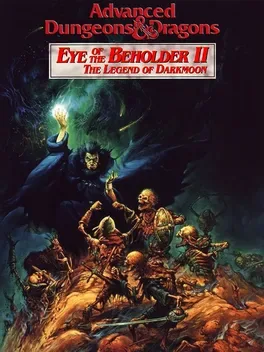
Eye of the beholder II: The legend of Darkmoon is an all-3D leisure series computer role-playing adventure based on the popular AD&D 2nd edition game rules and on an original story created for this game. THe action takes place in and around the dreaded temple Darkmoon located in TSR's Forgotten Realms gameworld. Everything in Eye of the Beholder II is from your point of view. Watch the trees pass by as you move through the forest around the temple. Pick up items and take them with you. Open door with keys, by pressing buttons or by pulling release levers. See monsters draw nearer to you and close in for battle. Attack with the weapons your characters have in their hands. Cas spells with your Cleric's or Paladin's hoily symbols and your mages' spell books. Those in the front of the party may attack with weapons such as swords and maces, while characters in the rear ranks may attack with spells or ranged weapons such as bows and slings.
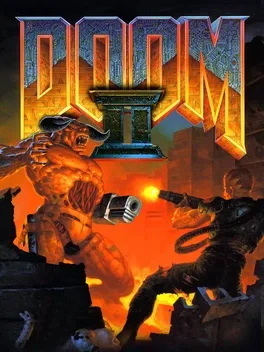
Doom II: Hell on Earth is a first-person shooter developed by id Software and released in 1994 as a sequel to the original Doom. The game continues the story, with players battling through Earth after it has been invaded by demonic forces. Gameplay remains similar to its predecessor, featuring fast-paced combat, maze-like levels, and an array of weapons, including the introduction of the powerful Super Shotgun. Doom II also adds new enemy types, such as the Arch-vile and the Mancubus, increasing the game's challenge. Initially released for MS-DOS, Doom II has since been ported to numerous platforms, becoming a cornerstone of the FPS genre.

In the future, humans have left Earth and settled throughout the galaxy. On Mars, the Union Aerospace Corporation has established a radioactive waste facility and allowed the military to conduct teleportation experiments on the nearby moons of Deimos and Phobos. Hours ago, the base on Mars began receiving incoherent distress messages from Phobos, while Deimos has disappeared completely. With all attempts to establish contact failing, you and your team have been dispatched to investigate. Upon arrival, you secure the perimeter as the rest of your team enters the facility. As you stand guard, your radio crackles with the sound of gunfire, cracking bones and blood-curdling screams and eventually falls silent. Alone, with no way off the planet or means to defend yourself other than your trusty pistol, there’s only one way out - into the complex of death and the horrors that await you within. If you plan to get out of here alive you must fend off the hordes of demonic imps, haunting spectres and your undead, former comrades waiting to tear you limb from limb. So, grab the nearest shotgun and blast your way out of this fragging madness!
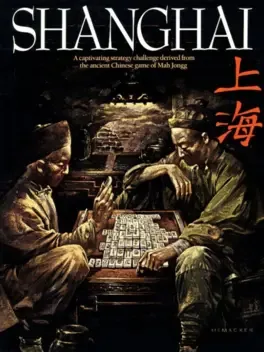
Shanghai is a computerized version of mahjong solitaire. After winning a game, the tiles reveal the three-dimensional blinking eye of a dragon behind the game screen. The Macintosh and Sega Master System version shows an animated dragon spitting fire.

Stunts (also known as 4D Sports Driving) is an early 3D racing video game developed by Distinctive Software, Inc.. The game places emphasis on racing on stunt tracks and features a track editor, it is clearly influenced by the earlier arcade game Hard Drivin' and has many similar elements to the game Stunt Driver which was released around the same time. In Stunts, players race a lap around the circuit, with the aim of completing the lap as quickly as possible without crashing. However, these laps often feature special track areas such as loops, jumps (including over tall buildings), slalom roads and corkscrews. The game area is restricted by a large fixed size square area defined and surrounded by a fence which the game is designed to prevent the player from leaving. Players can either race against the clock or choose between six different opponents; there is no support for real-time multiplayer. Stunts features 11 different drivable cars, with either automatic or manual transmission. Replays of races can be saved and reviewed. There are four camera views available during replay and actual driving, and the dashboard is an optional overlay on all views. It is also possible to continue the race from any point in the replay, however the time for that race will not be recorded. Another major feature of the game is the built-in track and terrain editor which allows the user to design arbitrary new tracks or modifications of existing tracks.[2] The cars can drive on paved roads, gravel roads, icy/snow roads, and grass if driving off the track — which all offer different levels of grip. The game has a relatively advanced pseudo-physics engine for its time which can simulate oversteer and understeer, grip is also proportional to the banking of a curve. The game features a 3D engine with flat shading and no textures, it uses polygonal graphics for most objects, including trees and road signs, there are few sprites. The resolution is 320×200 with 256 colors. There is an option to select high and low detail. The game is written for DOS and executes in real mode.[3] Stunts includes a form of copy protection. Each time after running the program, players must complete a specific phrase found in the game manual before being allowed to race. If the player fails to complete the phrase three times, the next race will still load. However, approximately four seconds into the race, the player is informed that he or she did not deactivate the car's security system, the car crashes, and the player is returned to the main menu.
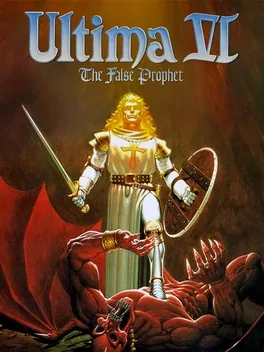
Ultima VI sees the player return to Britannia, at war with a race of gargoyles from another land, struggling to stop a prophecy from ending their race. The player must help defend Britannia against these gargoyles, and ultimately discover the secrets about both lands and its peoples.
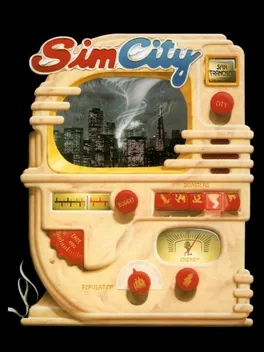
SimCity, later renamed SimCity Classic, is a city-building simulation video game, first released on February 2, 1989, and designed by Will Wright for the Macintosh computer. SimCity was Maxis's second product, which has since been ported into various personal computers and game consoles, and spawned several sequels including SimCity 2000 in 1993, SimCity 3000 in 1999, SimCity 4 in 2003, SimCity DS, SimCity Societies in 2007, and SimCity in 2013. Until the release of The Sims in 2000, the SimCity series was the best-selling line of computer games made by Maxis.
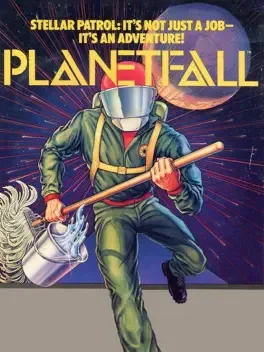
Planetfall is a science fiction interactive fiction computer game written by Steve Meretzky, and the eighth title published by Infocom in 1983. Like most Infocom games, thanks to the portable Z-machine, it was released for several platforms simultaneously. The original release included versions for the PC (both as a booter and for DOS) and Apple II. The Atari ST and Commodore 64 versions were released in 1985. A version for CP/M was also released. Although Planetfall was Meretzky's first title, it proved one of his most popular works and a best-seller for Infocom; it was one of five top-selling titles to be re-released in Solid Gold versions including in-game hints. Planetfall utilizes the Z-machine originally developed for the Zork franchise and was added as a bonus to the "Zork Anthology". The word planetfall is a portmanteau of planet and landfall, and occasionally used in science fiction to that effect. The book Planetfall written by Arthur Byron Cover, uses the game image on the cover, and is marketed "In the bestselling tradition of THE HITCHHIKER'S GUIDE TO THE GALAXY.[2] A sequel, Stationfall, was released in 1987. Planetfall teleports you 12,000 years into an outrageous future. You joined the Stellar Patrol to explore the galaxy, but all you've seen is the end of a mop - until your ship explodes and you're jettisoned onto a mysterious, deserted planet. Luckily, you have Floyd, a lovable multi-purpose robot with the personality of a mischievous 8-year-old. He's the ideal companion with whom to brave your new world, as you dare its dangers and uncover its secrets.
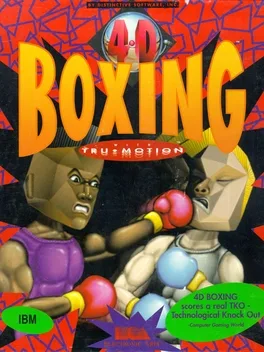
4-D Boxing leaves behind any pretences of being a pure arcade game based on boxing, and aims to recreate the sport in full detail. The graphics engine allows for multiple camera angles and viewpoints, and considerably detailed visuals. These required more advanced hardware than was common at the time, but a stick-figure mode was included as a compromise. The moves on offer include all the uppercuts and hooks of a real fight, and the players are designed to move realistically to implement them. You progress through the game by taking on a succession of increasingly difficult fighters, and get to train your boxer in between. Advanced action replays are included as well, so you can review all that happened.
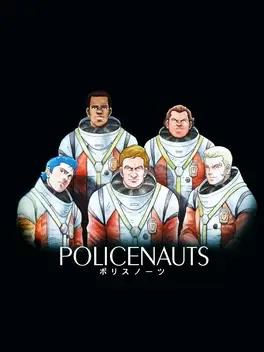
Policenauts is an interactive movie/graphic novel/adventure game with a hard science fiction storyline, written and directed by Hideo Kojima, and published by Konami. It was initially released for the PC-9821 computer platform in 1994, followed by remade versions for the 3DO in 1995, and the PlayStation and Sega Saturn in 1996. The game has never been officially released outside Japan, despite plans for an English localization of the Saturn version. On August 24, 2009 (in honor of the 46th birthday of the game designer, Hideo Kojima), an unofficial English translation patch was released onto the internet. The game is set in a primarily first person perspective and uses a point-and-click interface: the player can move the cursor and have the protagonist (Jonathan Ingram) analyze objects around his environment or talk to other characters in the game. Like in Snatcher, the game features shooting segments where the player must defend their character from incoming enemies. The player can use the shooting trainer at the police department to test their reflex and accuracy. There are numerous puzzles in the game, including an event where the player must dismantle a bomb by following their partner's instructions. The console versions of the game all include support for their respective mouse peripherals. The Saturn version features light gun support for the shooting segments. The game was notable for being an early example of extensive voice recording in video games. It also featured a theme revolving around space exploration and occasional full-motion video cut scenes. The gameplay was largely similar to Snatcher, but with the addition of a point-and-click interface and some first-person shooter segments. Policenauts also introduced summary screens, which act to refresh the player's memory of the plot upon reloading a save, an element Kojima would later use in Metal Gear Solid. The PlayStation version of Policenauts could also read the memory card and give some easter egg dialogues if a save file of Konami's dating sim Tokimeki Memorial is present, a technique Kojima would also later use in Metal Gear Solid.
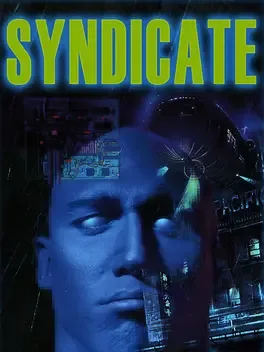
Syndicate is a strategic action game set in a dystopian future where corporate entities vie for global dominance. Players control a syndicate, expanding their influence across a world map divided into territories. Starting from a European base, players deploy agents to infiltrate and conquer adjacent regions through covert operations and violence. Once a territory is captured, players can impose taxes to increase revenue, but must balance this with the risk of inciting rebellions. The game involves managing resources, dispatching agents to eliminate threats both foreign and domestic, and defending against rival syndicates' incursions. Success requires careful strategic planning, efficient resource management, and the ability to outmaneuver opponents on a global scale. The ultimate goal is to achieve world domination by controlling all territories and overcoming all challenges.
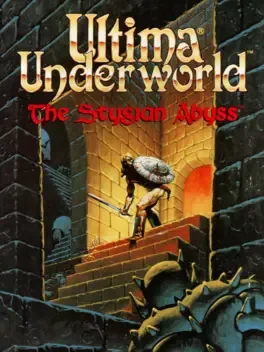
The Isle of the Avatar was discovered during the Fourth Age (as related in Quest of the Avatar), at the climax of the Avatar’s quest. The Stranger from Another World, who came to Britannia in answer to Lord British’s summons, completed the Test of the Eight Virtues and became the Avatar — the embodiment of the pure axiom of life. It was during his journeys that the Avatar unearthed a chilling artifact: the skull of Mondain the Wicked, the first of the Triad of Evil. There were those who claimed that the artifact held the power to destroy all life on our world. Fortunately, it was the Stranger who discovered it, and not someone of lesser Virtue. Upon completing the Path of the Eight Virtues, the Avatar embarked on a search for the Codex of Ultimate Wisdom. Legend linked this ancient tome with the subterranean maze known as the Great Stygian Abyss. “Truly, no one has ever plumbed its depths,” wrote Shamino, who arranged by magic to obtain a map of its corridors. “I cannot imagine the horrors that await the first to venture into the Stygian depths.”
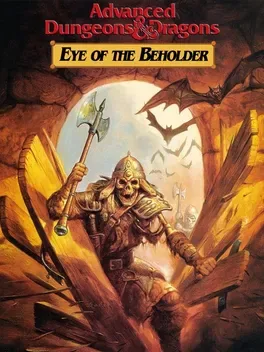
Eye of the Beholder is an all 3-D, Legend Series computer role-playing adventure based on the popular Advanced Dungeons & Dragons 2nd Edition rules and on an original story created for this game . The action takes place in the sewers and catacombs beneath the City of Waterdeep located in TSR's Forgotten Realms game world.
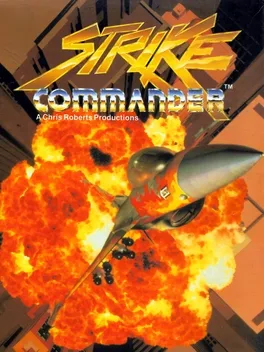
After the success of the Wing Commander games, Chris Roberts and Origin turned their eye to developing a story-focused combat flight simulation. The result was Strike Commander.
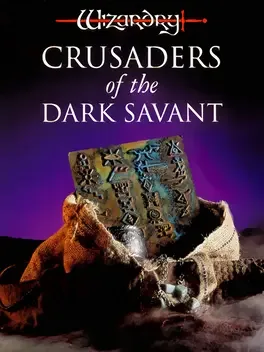
Begin your adventure in Crusaders of the Dark Savant. Import your characters from Bane of the Cosmic Forge or create a new party capable of surviving the rigors of a strange alien world. Both friends and foes you'll discover as you search for the forgotten secret of a once madman - the secret of the very universe itself. And you won't be alone in your search. Others as enterprising as you have also entered this dimension. Only your actions - both past and present - will determine just how well you fare. From the depths of a dungeon to the blue and limitless skies, you'll see it all - you'll hear it all - in this latest Wizardry adventure.
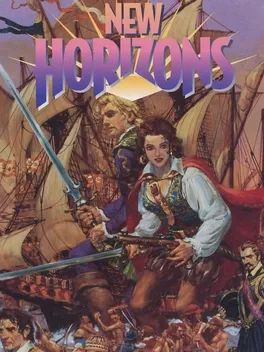
In the first Uncharted Waters game, it was the 15th century and the New World was discovered. Now in New Horizons, it is the early 16th century and the age of exploration and sea trade is underway. Players choose from any one of six adventurers (scenarios), each with their own distinctive but intertwining plot, to embark on a quest of sailing, seamanship and exploration. The six characters are:Joao Franco is the son of Duke Leon Franco, the hero of the first Uncharted Waters game and an influential man in Portugal. His father wants to make him into a strong man and so decides to send him out to sea. Young Joao is tasked with learning the skills of the sailor (he is the only character who starts at level one) and embarking on a quest of discovery; reaching the far east and eventually looking for the secret of Atlantis. Catalina Erantzo is a Spanish naval officer who believes her beloved and her brother were both murdered by the Portuguese armada. Vowing revenge she turns to a life of piracy and soon becomes a red haired scourge of the seas. Pietro Conti is a indebted man, having inherited the financial woes of the Conti family. When the Duchess Franco hires him to spy on her son, he accepts the job and obtains a ship. Pietro hopes to use these resources to seek out valuable treasure and clear up his family's debt. Ernst Von Bohr is a geographer who is teaching classes in Holland. But he yearns to leave the classroom and sail the high seas, living a life of adventure that he has only read about in books. When his friend, Mercator offers to finance his initial voyage in exchange for cartography information about the world, Ernst is given the opportunity to live out his dream. Ali Vezas is a poor orphaned child living in Istanbul and serving others. He dreams of becoming his own master and making his own fortune across foreign lands. A twist of fate aides in providing him with small loans, with which he is able to afford his first ship and sail out with a cargo hold full of goods... Otto Baynes styles himself a Royal Knight of the British Empire, in the service of his majesty the king. Promoted to Admiral of the British fleet, the kingdom is worried about the increased naval power of Spanish fleets. Otto is given a letter of marque by the king and ordered to terrorize the Spanish Fleet. Equipping himself simply at first, Otto strives to become a great Privateer in the name of King and Country.Regardless of the character chosen, Uncharted Waters: New Horizons is a top-down sailing simulation. At sea, players control the direction of their ship, where speed is affected by the number/health of the crew, the wind and the currents. Players can navigate anywhere there is water (though some ships are not ocean worthy) and discover interesting landmarks and new ports. Upon landing at a port, the view is also top-down and the player can enter different buildings, each with unique services and goods. These include: The Inn, the Item Shop, The Shipyard, The Tavern, The Castle, The Guild Hall, The Church, The Merchant and the Harbor. It's up to the player to earn enough gold to keep the crew fed and financed and keep the fleet repaired. Primary methods of earning money are through sea trade, accepting jobs from the guild, gambling and battle with other ships. During naval combat, the game becomes a turn-based top-down strategy game, with the player moving ships in order to obtain trajectories needed to fire cannons at enemy ships, or run alongside enemy vessels in order to board them. If the player's flagship attacks the flagship of the enemy fleet, they can challenge the opponent to a duel. If accepted, the game changes to a side-view of the two captains engaged in a fight. During this sequence, the player can only choose which fighting maneuver (strike, thrust, parry, lash) they wish to engage in.
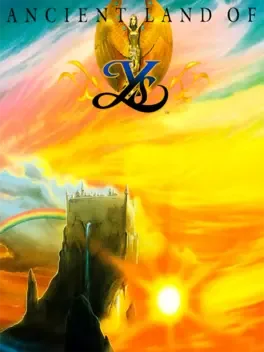
The hero of Ys is an adventurous young swordsman named Adol Christin. As the story begins, he has just arrived at the Town of Minea, in the land of Esteria. He is called upon by Sara, a fortuneteller, who tells him of a great evil that is sweeping the land. Adol is informed that he must seek out the six Books of Ys. These books contain the history of the ancient land of Ys, and will give him the knowledge he needs to defeat the evil forces. Sara gives Adol a crystal for identification and instructs him to find her aunt in Zepik Village, who holds the key to retrieving one of the Books. With that, his quest begins.

Mystic Square allows the player to select from among four unique protagonists, each hailing from one of the 2 prior danmaku shooting games in the series. Series mainstays Reimu Hakurei and Marisa Kirisame are joined by former enemies Mima and Yuuka Kazami for a journey reaching to the depths of the Makai. Mystic Square also marks the first appearance of Alice Margatroid as an opponent, who later stages a comeback in Perfect Cherry Blossom. Although limited by the PC-98 hardware, Mystic Square is the most refined of the PC-98 Touhou titles, and features gameplay quite similar to Windows Touhou games. It employs a variant of Lotus Land Story's Dream Bonus system, rewarding the player for taking risks (i.e. collecting point items from the top of the field area). Its rank system, however, is more lenient than Lotus Land Story's.
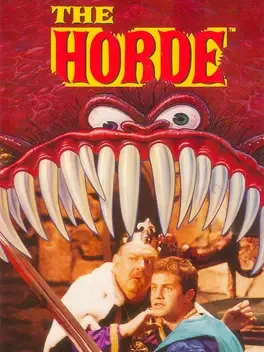
The Horde is a hybrid action-strategy video game that was originally released for 3DO and was ported to the Sega Saturn and DOS. It also featured full-motion video sequences featuring a number of actors including Kirk Cameron as Chauncey and Michael Gregory as Kronus Maelor. Video sequences were reduced to slide shows (with full sound) in some versions. The game was bundled with the RealMagic MPEG playback card as a demonstration of the card's abilities to play back full-motion MPEG video via the card's hardware decoder, at the time software MPEG decoding was not viable due to the lack of processing power in contemporary processors. The music was composed by Burke Trieschmann and won Computer Gaming World's Premiere Award for Best Musical Score in 1994.